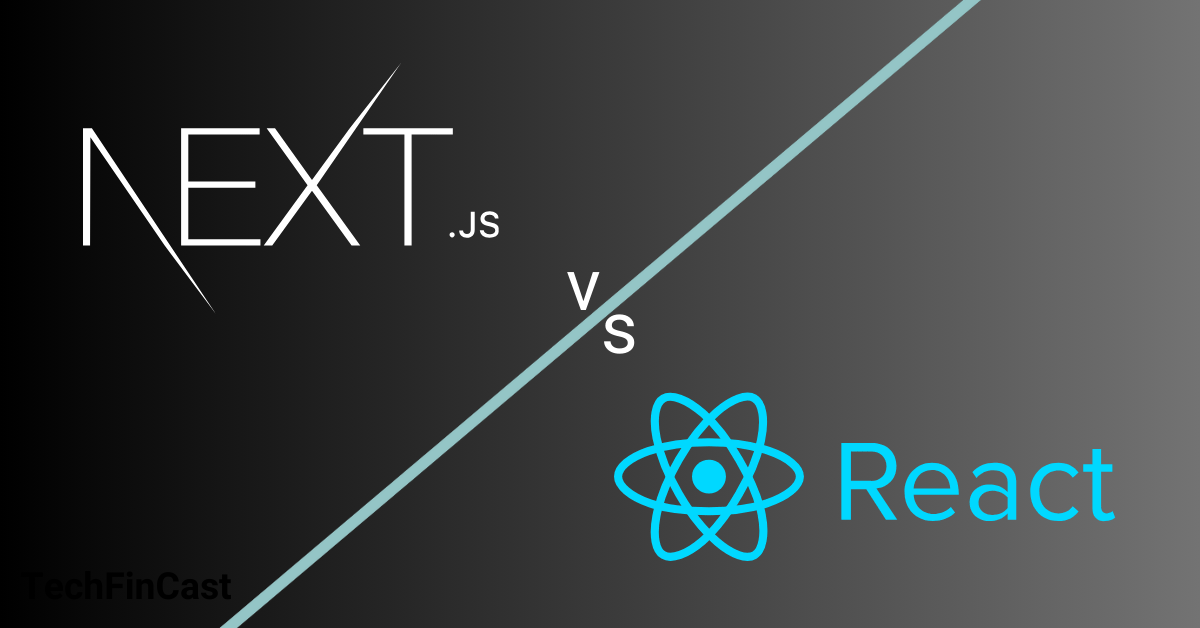In the world of web development, choosing the right framework can be a game-changer for your projects. Two of the most popular and powerful tools available today are Next.js and React. Both have their unique strengths and are often used together, but understanding their differences is crucial for making the best choice for your specific needs. In this blog we will dive into Next.js vs React, providing a comprehensive comparison.
Table of Contents
Overview
Web development has evolved significantly, with developers facing increasing demands for performance, scalability, and user experience. Traditional Single-Page Applications (SPAs) built with React often struggle with initial load times and SEO challenges due to their client-side rendering approach. As web applications grow more complex, developers need a robust solution that addresses these issues without compromising on the flexibility and power.
Agitation
The limitations of SPAs built solely with React can lead to several critical issues:
- Slow Initial Load Times: SPAs load a significant amount of JavaScript upfront, leading to slower initial page loads. This can be a major drawback, especially for users on slower networks.
- SEO Challenges: SPAs rely heavily on client-side rendering, which can cause issues with search engine indexing. This is a significant problem for businesses that depend on organic search traffic.
- Complexity in Server-Side Rendering (SSR): Implementing SSR in a React application can be complex and time-consuming, requiring additional tooling and configuration.
- Routing and Configuration Overhead: React, being a library rather than a full-fledged framework, requires developers to set up routing and other configurations manually, adding to the development time and effort.
These challenges often lead to frustration and challenging, slowing down the development process and affecting the overall performance of web applications.
Solution: Next.js
Next.js, a React framework created by Vercel, addresses these problems head-on by providing a comprehensive solution for building modern web applications. Let’s dive into how Next.js solves these issues and enhances the development experience.
What is Next.js?
Next.js is a powerful framework that extends React, providing features like server-side rendering, static site generation, and automatic code splitting out of the box. It aims for the development of performance and scaling web applications by offering a robust set of tools and conventions.

→ Key features and benefits of Next.js
- Server-Side Rendering (SSR):
- Performance Boost: By rendering pages on the server, Next.js significantly reduces the initial load time, leading to a smoother user experience.
- SEO Improvements: SSR ensures that search engines can easily index your content, improving visibility and search rankings.
- Static Site Generation (SSG):
- Speed and Efficiency: SSG allows you to pre-render pages at build time, delivering lightning-fast performance and reducing server load.
- Scalability: Static pages can be served from a CDN, making it easier to scale your application to handle large traffic volumes.
- API Routes:
- Integrated Backend: Next.js provides a way to create API endpoints within the same project, streamlining the development process and reducing the need for a separate backend service.
- Automatic Code Splitting:
- Optimized Performance: Next.js automatically splits your code into smaller pieces, loading only the necessary components for each page. This reduces the initial load time and improves overall performance.
- File-based Routing:
- Simplified Routing: Next.js uses a file-based routing system, making it easy to define routes by simply creating files in the pages directory. This reduces the need for manual configuration and improves development speed.
- Built-in CSS and Sass Support:
- Styling Made Easy: Next.js includes built-in support for CSS and Sass, allowing you to manage your styles more efficiently without the need for additional configuration.
Real-World Case Study: Hulu's Migration to Next.js
To illustrate the benefits of Next.js in a real-world scenario, let’s take a look at Hulu’s migration from a traditional React SPA to Next.js.
The Challenge: Hulu’s web platform was initially built as a React SPA, which faced several issues related to performance, SEO, and maintainability. The team struggled with slow initial load times, poor SEO performance, and complex SSR implementation.
The Solution: Hulu decided to migrate their platform to Next.js to leverage its built-in SSR, SSG, and performance optimization features.
The Results:
- Improved Performance: The migration to Next.js resulted in a significant reduction in initial load times, providing a smoother and faster user experience.
- Better SEO: With SSR, Hulu’s content became more easily indexable by search engines, leading to improved search rankings and increased organic traffic.
- Simplified Development: Next.js’s file-based routing and integrated API routes streamlined the development process, allowing Hulu’s team to focus on building features rather than configuring the framework.
What is React?
React is a JavaScript library for building user interfaces, developed and maintained by Facebook. It allows developers to create reusable UI components, manage application state efficiently, and build dynamic, interactive web applications.

While Next.js offers many advantages, it’s essential to understand how React fits into the picture and when it stands out as the best choice for certain projects.
→ Key features and benefits of React
- Component-Based Architecture:
- Reusability: React’s component-based architecture promotes reusability, allowing developers to build modular and maintainable code. Components can be easily shared across different parts of the application or even between different projects.
- Separation of Concerns: By incorporating the UI logic within components, React helps maintain a clear separation of concerns, making the codebase easier to understand and manage.
- Virtual DOM:
- Performance Optimization: React virtual DOM optimizes performance by minimizing direct manipulation of the actual DOM. It calculates the minimal number of changes required to update the UI, resulting in faster rendering and better performance.
- Efficient Updates: The virtual DOM efficiently updates only the parts of the UI that have changed, reducing unnecessary re-renders and improving the overall responsiveness of the application.
- Declarative Syntax:
- Ease of Use: React’s declarative syntax allows developers to describe how the UI should look based on the application’s state. This makes it easier to understand and reason about the code, leading to more predictable and maintainable applications.
- State Management: React’s declarative approach simplifies state management, enabling developers to focus on building the UI logic rather than dealing with low-level DOM manipulation.
- Unidirectional Data Flow:
- Predictable Data Handling: React follows a unidirectional data flow, where data flows from parent components to child components. This makes it easier to track data changes and debug the application, leading to more predictable and maintainable code.
- Centralized State Management: React’s unidirectional data flow works seamlessly with state management libraries like Redux or MobX, providing a centralized and consistent way to manage the application’s state.
- Ecosystem and Community Support:
- Rich Ecosystem: React has a vast ecosystem of libraries, tools, and extensions that enhance its capabilities. From state management libraries to UI component libraries, developers have access to a wide range of resources to accelerate development and improve productivity.
Active Community: React boasts a large and active community of developers who contribute to its growth and provide support through forums, documentation, and open-source projects. This ensures that developers can find solutions to common challenges and stay updated with the latest trends and best practices.
Real-World Case Study: Facebook's Use of React
As the creator of React, Facebook has extensively used the library in its own products. Let’s explore how React has benefited Facebook’s development process and user experience.
The Challenge: Facebook faced the challenge of building highly interactive and dynamic user interfaces while maintaining performance and scalability. The traditional approach of manipulating the DOM directly was becoming inefficient and difficult to manage.
The Solution: React was developed to address these challenges by providing a component-based architecture and a virtual DOM for efficient updates. Facebook adopted React in its main application and later expanded its use to other products like Instagram and WhatsApp.
The Results:
- Improved Performance: React’s virtual DOM and efficient rendering algorithms significantly improved the performance of Facebook’s applications. The virtual DOM minimized the number of updates required, resulting in faster UI rendering and a smoother user experience.
- Scalability: React’s component-based architecture allowed Facebook to build modular and reusable UI components, making it easier to scale and maintain their codebase. This approach also facilitated collaboration between different teams working on various parts of the application.
- Enhanced Developer Productivity: React’s declarative syntax and unidirectional data flow simplified the development process, enabling developers to focus on building features rather than dealing with complex UI logic. This led to faster development cycles and increased productivity.
Next.js vs React Comparison
While Next.js offers many advantages, it’s essential to understand how it compares to React and when to use each tool.
When to use React:
- Flexibility: React is a library, providing developers with the flexibility to choose their tools and configurations. It’s ideal for projects and the application.
- Client-Side Rendering: For applications that don’t require SSR or SSG, React’s client-side rendering is sufficient and can lead to a simpler project setup.
- Learning Curve: React has a more gradual learning curve, making it easier for beginners to get started with web development.
When to use Next.js:
- Performance and SEO: Next.js is the go-to choice for projects that require high performance and SEO optimization, thanks to its SSR and SSG capabilities.
- Rapid Development: With features like file-based routing, and built-in CSS support, Next.js can significantly speed up the development process.
- Scalability: For applications that need to scale efficiently, Next.js static site generation and CDN-friendly architecture make it easier to handle large traffic volumes.
Conclusion
Choosing between Next.js vs React depends on your project’s specific needs and goals. React provides the flexibility and control needed for client-side rendering and custom setups, making it ideal for smaller projects or those with unique requirements. On the other hand, Next.js offers a comprehensive solution for building performant, SEO-friendly, and scalable web applications, making it the preferred choice for larger projects and those needing server-side rendering or static site generation.
Related Articles on Interview Questions
- Selenium Interview Questions
- Playwright Interview Questions
- Software Testing Interview Questions
- Performance Testing Interview Questions
- CSS Interview Questions
- Digital Electronics Interview Questions
- Digital Marketing Interview Questions
- Terraform Interview Questions
- Microservices Interview Questions
- React Native Interview Questions
Frequently Asked Questions
Next.js can be seen as an enhancement to React, offering additional features and improvements, particularly for server-rendered applications. If you are starting a new project and these features align with your goals, Next.js might be the better choice. If you need more flexibility and control over your setup, React might be more appropriate.
Restricted Attention to Server-Side Logic: Next.js excels in frontend work, but it can also render on the server.
Next.js expands on React capabilities by providing features like server-side rendering, static site generation, automatic code splitting, routing, API routes, and integrated CSS and Sass support. React serves as the basis for creating user interfaces.
If you understand the fundamentals of React, Next.js is easy to learn, but React JS is easier to learn and use if you know the basics of HTML, CSS, and JavaScript.
